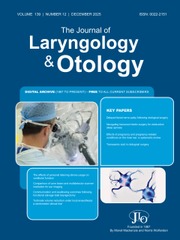Article contents
Hypoglossal nerve stimulation explantation in patients with obstructive sleep apnoea: a systematic review
Published online by Cambridge University Press: 25 October 2024
Abstract
Hypoglossal nerve stimulation has emerged as a promising therapeutic approach for obstructive sleep apnoea patients who are intolerant to continuous positive airway pressure therapy. This paper aimed to explore reasons for hypoglossal nerve stimulation device explantation and associated complications.
Following Preferred Reporting Items for Systematic Review and Meta-Analyses guidelines, a systematic search across Embase Ovid, PubMed, Scopus, and the Cochrane library yielded 14 articles that met the inclusion criteria. Exclusion criteria were (1) systematic reviews and meta-analyses, conference posters and editorials; (2) non-English studies; and (3) studies published before 2010.
Of the 121 patients identified as having undergone hypoglossal nerve stimulation device explantation, 126 reasons were identified for the procedure. The primary reasons included device malfunction (19.8 per cent), infection (19.0 per cent) and device migration (18.3 per cent). Other reasons included discomfort (9.5 per cent), improper placement (6.3 per cent) and ineffective devices (6.3 per cent). Complications were infrequent (2.48 per cent).
Device malfunction, infection and device migration were prominent reasons for hypoglossal nerve stimulation device explantation. Complications post-explantation were rare but included temporary hypoglossal paresis.
Information
- Type
- Review Article
- Information
- Copyright
- © The Author(s), 2024. Published by Cambridge University Press on behalf of J.L.O. (1984) LIMITED.
Footnotes
John Ming Ren Loh takes responsibility for the integrity of the content of the paper
Presented at event title, date month year, town/city, state abbreviation (if in USA), country.
References
- 1
- Cited by

